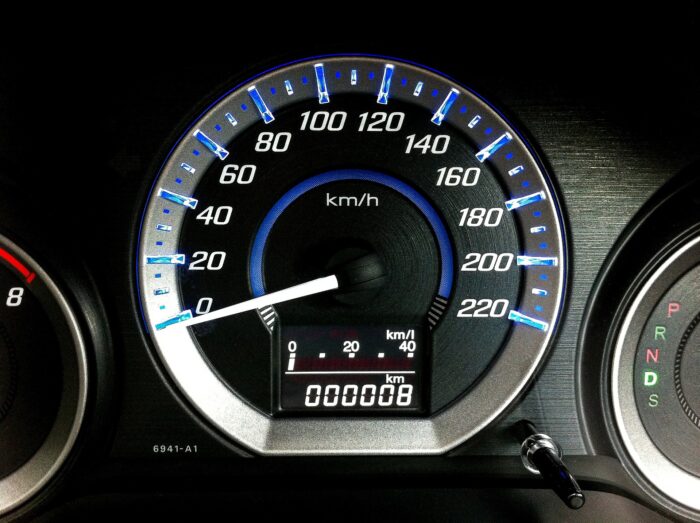“Busting miles” or “clocking” are terms used when referring to the process of faking the mileage on a car’s dashboard, this crime has been on an alarming increase in recent times.
According to National Highway Traffic Safety Administration’s (NHTSA) estimates, more than 450,000 used vehicles are sold each year with a fake odometer reading or mileage.
This is something to worry about, the estimate went further to explain that this crime costs the American car buyers more than $1 billion annually.
These are estimates, and this data is only coming from America. Think about how much money it will be costing used car buyers in West Africa and other parts of the world that imports used vehicles from the US and Canada.
According to a Carfax estimate, 12% of the odometers in Europe are manipulated; it’s an obvious fact that odometer fraud is one of the biggest frauds in the auto-industry.
Buying a used car can save a great deal of money, especially now when the cost of producing brand new vehicles are high, due to the embargo placed on chip exportation.
Detailed Vehicle History is about to disclose to you in this article five proven ways to spot a fake mileage.
These methods, when properly applied, can help used car buyers and sellers to avoid costly mistakes and to make good decisions.
The last method, a car mileage check by VIN lookup, is highly recommended, please check it out.
Average mileage vs dashboard's mileage
Studies have revealed that in the United Kingdom, cars usually have an annual average mileage of 12,000miles.The mileage may vary.
However, it’s a yardstick you can use in judging the authenticity of whatever is displayed on the dashboard.
So you may want to find out the year the vehicle went into use, compare it with this average and see if it is suspiciously low, that is too low to be true.
Let me give an example, suppose you are about to buy a car that has been used for 5 years, judging from the average mileage discussed above the total mileage ought to be around 60,000 miles (Plus or Minus) but the odometer reading is 30,000miles, that is about 40% below average, now that’s what we call a “red flag” no need to argue with the sales man just turn around and take your leave, then send in an appreciation email to support@detailedvehiclehistory.com for this helpful guide.
Observing the displays
Clocking an analogue odometer usually results in disfigured digits, even a child could tell that something went wrong.
The dashboards and surroundings usually have marks and dents where they ought not to be.
Digital odometer ought to have solved this problem-you may reason, yes you are right because you cannot use pliers and screwdrivers to manipulate them.
Instead of solving the odometer roll back problem, digital odometers made matters worse, in our subsequent article we will discuss how fraudsters manipulate digital odometers, so stay tuned to our blog.
So how can you tell if a digital odometer has been altered? The digital system is designed such that all components can work independently and feed data to a central system.
A smart car can predict a particular mileage at which there could be a possible “oil change” if the oil was changed at that point this information is recorded forming a timeline of events.
Hence, the vehicle can warn you that something is wrong if the mileage is reversed, why so? Because the mileage no longer tallies with other data recorded in the car’s computer, instead it points to a future event.
Depending on the make and model of the vehicle you are using an error message may be displayed. Sometimes an asterisk may pop up next to the mileage.
Experts’ claim that it does not always mean “an odometer roll back ” nonetheless a warning should be something worth paying heed to.
So learn about your make and model signs and symbols and understand the various warning signs/symbols and their meaning.
Earn up to 40% per sale in our affiliate program
Unlimited referrals and no commission caps
Offer discount coupons to entice audience
Dedicated account manager for assistance
Industry’s longest cookie duration-365 days
The gossip of the paperwork
Usually during routine maintenance, one of the things documented is the mileage. The current mileage is usually recorded for every major maintenance operation including changing of oil and the likes.
So this should be simple, as simple as saying: “please can I have the papers of this vehicle?” When you are with the papers, look for discrepancies and abnormalities in comparison with the current mileage on the dashboard.
A smart dealer with a clocked vehicle in their showroom will tell you that the papers are long lost! So if the dealer or the sales person tells you that a vehicle has no paper that is a big reason for not buying the car. Walk away, come back to this blog and share this article.
Low mileage with high tear and wear
This is like an old man with artificial skin, the skin is glowing but the organs are weak, weary and heading towards the grave.
So does the mileage correspond to the rate of tear and wear around the car?
You may argue that car parts could be changed and repainted but then there are parts that are not readily or easily tampered with.
Get to the driver’s side, have a closer look at the brake pads and clutch pedals, are they worn out? Dog eared? These parts of the car are not readily replaced, and these are the places the salesman and the car dealers will not like you to look at.
So your dream car has low mileage and a good price, check again, the mileage may be fake!
Use the Detailed Vehicle History tool
Detailed Vehicle History is now being powered by an AI system which has the ability to access multiple databases and gather relevant information about the history of any used vehicle.
Amongst these details is the mileage report of the vehicle, the system gets its information from Department of Motor Vehicles, NHTSA, Insurance companies, major auto mechanics, thousands of car auction sites and more.
If you are going to buy a used vehicle in the nearest future, it is strongly advisable that you run an odometer check by VIN today, this will help you confirm not just the mileage, but also other pitfalls associated with used cars, such as theft, cars with debt on them, too many past owners, vehicle that had accident in the past and lots more.
So go ahead and get a vehicle history report now.










